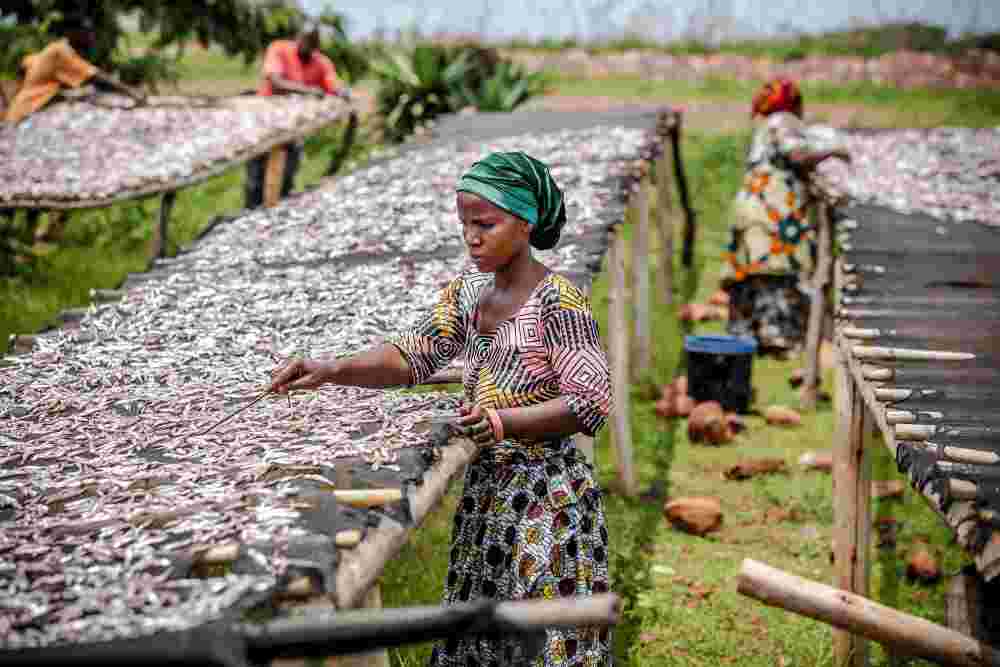Empowering Women in Small-Scale Fisheries for Sustainable Food Systems
Namibia, 2022
Get Microdata
Reference ID
NAM_2022_EWSFSFS_v01_EN_M_v01_A_OCS
Producer(s)
Molly Ahern
Collections
Metadata
Created on
Dec 01, 2023
Last modified
Dec 01, 2023
Page views
28384
Downloads
269
- Data files
- data_anon_ind
- data_anon_FGD
- data_anon_KII
What is the first Challenge? (V130)
Data file: data_anon_KII
Overview
Valid:
26
Type:
Discrete
Width:
177
Range:
-
Format:
character
Questions and instructions
Categories
| Value | Category | Cases | |
|---|---|---|---|
| Access to equipments | 1 |
3.8%
|
|
| Access to right (Fishing license) | 1 |
3.8%
|
|
| Climate change (water scarcity ) | 1 |
3.8%
|
|
| Cold storage facilities | 1 |
3.8%
|
|
| Fish are not enough for Marketing | 1 |
3.8%
|
|
| Fish is becoming scare and fishers have to walk and trave long distances to catch fish. | 1 |
3.8%
|
|
| Floodplains don't hold water, for the whole year, thus fishing is not practiced throughout the year | 1 |
3.8%
|
|
| Funds to upgrade fishing equipment | 1 |
3.8%
|
|
| Hippopotamus and crocodile attacks | 1 |
3.8%
|
|
| Lack of fish feed | 1 |
3.8%
|
|
| Lack of fish feed supply and sufficient knowledge on fish farming | 1 |
3.8%
|
|
| Lack of fish in the markets big commercial companies don't sell their products locally most of these companies export to other countries. | 1 |
3.8%
|
|
| Lack of funds to develop farm and buy fish feed | 1 |
3.8%
|
|
| Lack of places where vendors can go and selling their products | 1 |
3.8%
|
|
| Lack of storage facilities e.g freezers | 1 |
3.8%
|
|
| Limited number of fishing boats | 1 |
3.8%
|
|
| Loss of fish in storage and processing | 1 |
3.8%
|
|
| No organizations to help the SSF on how to use their hard earned money in a good way | 1 |
3.8%
|
|
| No support system, no policies and legislation to protect the small scale fisheries community, no association or organization for them to voice out their views. | 1 |
3.8%
|
|
| Permits too expensive, and expensive commercial fish | 1 |
3.8%
|
|
| Sometimes, they are prohibited from fishing in the lakes, and large water reservoirs, because traditional leaders think that fishing dertyfiying water, and reduce water quality | 1 |
3.8%
|
|
| There is lack of storage facilities e.g freezers | 1 |
3.8%
|
|
| They compete with recreational fishers for resources which is fish. | 1 |
3.8%
|
|
| Transportation | 1 |
3.8%
|
|
| Unemployment rate | 1 |
3.8%
|
|
| recreational fish caught are allowed to be sold | 1 |
3.8%
|
Warning: these figures indicate the number of cases found in the data file. They cannot be interpreted as summary statistics of the population of interest.
